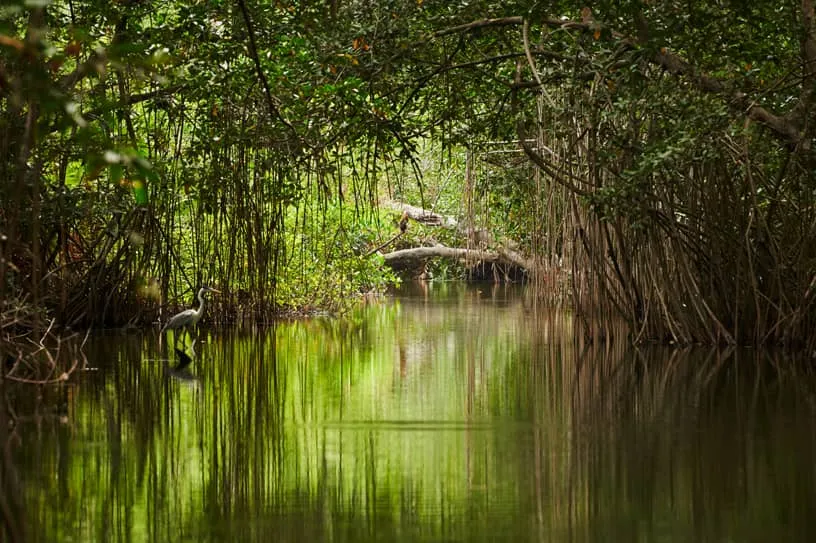The Sundarbans, a mesmerizing labyrinth of tidal waterways, mudflats, and dense mangrove forests, stands as a testament to the raw power and delicate balance of nature. This UNESCO World Heritage Site, shared by Bangladesh and India, is a biodiversity hotspot teeming with extraordinary wildlife. A journey into the Sundarbans promises an unforgettable wildlife viewing experience, where you’ll encounter elusive creatures, witness captivating behaviors, and immerse yourself in a world unlike any other.
Why Embark on a Sundarbans Wildlife Viewing Adventure?
The Sundarbans is not just a forest; it’s a dynamic ecosystem where life thrives in the most unique and challenging conditions. Here’s why wildlife enthusiasts flock to this natural wonderland:
- The Royal Bengal Tiger: The Sundarbans is home to the largest population of Royal Bengal tigers in the world. These majestic creatures have adapted to a life in the mangroves, making them skilled swimmers and formidable predators. Witnessing a tiger in its natural habitat is an experience that will leave you awestruck.

Royal Bengal Tiger in Sundarbans
- Diverse Wildlife: The Sundarbans boasts an incredible array of biodiversity. From playful Irrawaddy and Gangetic dolphins to elusive fishing cats and monitor lizards, every corner of the forest holds the promise of an exciting encounter.

Irrawaddy and Gangetic dolphins in Sundarbans
- Avian Paradise: Birdwatchers will be delighted by the diverse avian population that calls the Sundarbans home. Keep an eye out for majestic Brahminy kites, graceful white-bellied sea eagles, and a variety of herons, egrets, and kingfishers.
- Unique Ecosystem: The Sundarbans is the largest mangrove forest in the world, playing a crucial role in maintaining ecological balance and protecting coastlines. Witnessing the intricate web of life that exists within this ecosystem is a humbling experience.

Mangrove forest in Sundarbans
Planning Your Sundarbans Wildlife Viewing Trip
Choosing the Right Season
The best time for wildlife viewing in the Sundarbans is during the winter months (November to February) when temperatures are milder, and wildlife is more active. However, each season offers unique experiences:
- Winter (November-February): Ideal for wildlife viewing, with comfortable temperatures and clear skies. Many migratory birds visit during this time.
- Spring (March-May): Warmer temperatures bring increased wildlife activity and the chance to witness the breeding season of some species.
- Monsoon (June-September): Heavy rainfall and high tides can limit access to some areas, but the lush vegetation creates a beautiful backdrop.
- Autumn (October): The post-monsoon season brings renewed life to the forest, with active wildlife and vibrant foliage.
Selecting Your Mode of Exploration
There are several ways to explore the Sundarbans and maximize your wildlife viewing opportunities:
- Boat Safaris: The most popular way to explore the Sundarbans, boat safaris take you through the intricate network of rivers and canals, offering glimpses of wildlife along the banks and in the water.

Boat Safari in Sundarbans
- Walking Safaris: Guided walks on designated trails allow for a closer look at the forest’s flora and fauna. Be sure to wear appropriate footwear and follow your guide’s instructions for safety.
- Birdwatching Tours: These specialized tours focus on the diverse avian population of the Sundarbans, led by knowledgeable guides who can help you identify different species.
- Photography Expeditions: Capture stunning images of the Sundarbans’ wildlife and landscapes on these dedicated photography tours.
Booking Your Tour
Numerous tour operators offer Sundarbans wildlife viewing packages, ranging from budget-friendly group tours to luxury private excursions. Choose a reputable operator with experienced guides who prioritize safety and responsible tourism.
Must-See Wildlife in the Sundarbans
- Royal Bengal Tiger: The undisputed king of the Sundarbans, these majestic creatures are elusive but worth the wait. Keep your eyes peeled along the riverbanks and listen for their distinctive roars.
- Irrawaddy and Gangetic Dolphins: These playful dolphins are often spotted swimming alongside boats, their sleek bodies glistening in the sunlight.
- Estuarine Crocodiles: These formidable reptiles are a common sight in the Sundarbans’ waterways. Keep a safe distance and admire their prehistoric power from afar.
- Fishing Cats: These skilled hunters are masters of camouflage, blending seamlessly with the surrounding vegetation. Look for them perched on branches or stalking prey along the riverbanks.
- Monitor Lizards: These large lizards are often seen basking in the sun or scavenging for food. Watch them closely, as they can move surprisingly quickly.
Tips for an Unforgettable Sundarbans Wildlife Viewing Experience
- Respect Wildlife: Always maintain a safe distance from animals and avoid disturbing their natural behavior.
- Follow Your Guide: Listen to your guide’s instructions and follow park regulations to ensure your safety and the well-being of the wildlife.
- Be Patient: Wildlife viewing requires patience and a bit of luck. Don’t get discouraged if you don’t spot every animal on your list.
- Pack Essentials: Bring sunscreen, insect repellent, a hat, sunglasses, binoculars, and a camera to capture your memories.
- Dress Appropriately: Wear comfortable, lightweight clothing in neutral colors that blend with the environment.
The Sundarbans Mangrove Forest offers an unparalleled wildlife viewing adventure, where you can witness the raw beauty of nature and encounter some of the world’s most fascinating creatures. Plan your trip, pack your bags, and prepare to be amazed by the wonders of this unique ecosystem.



